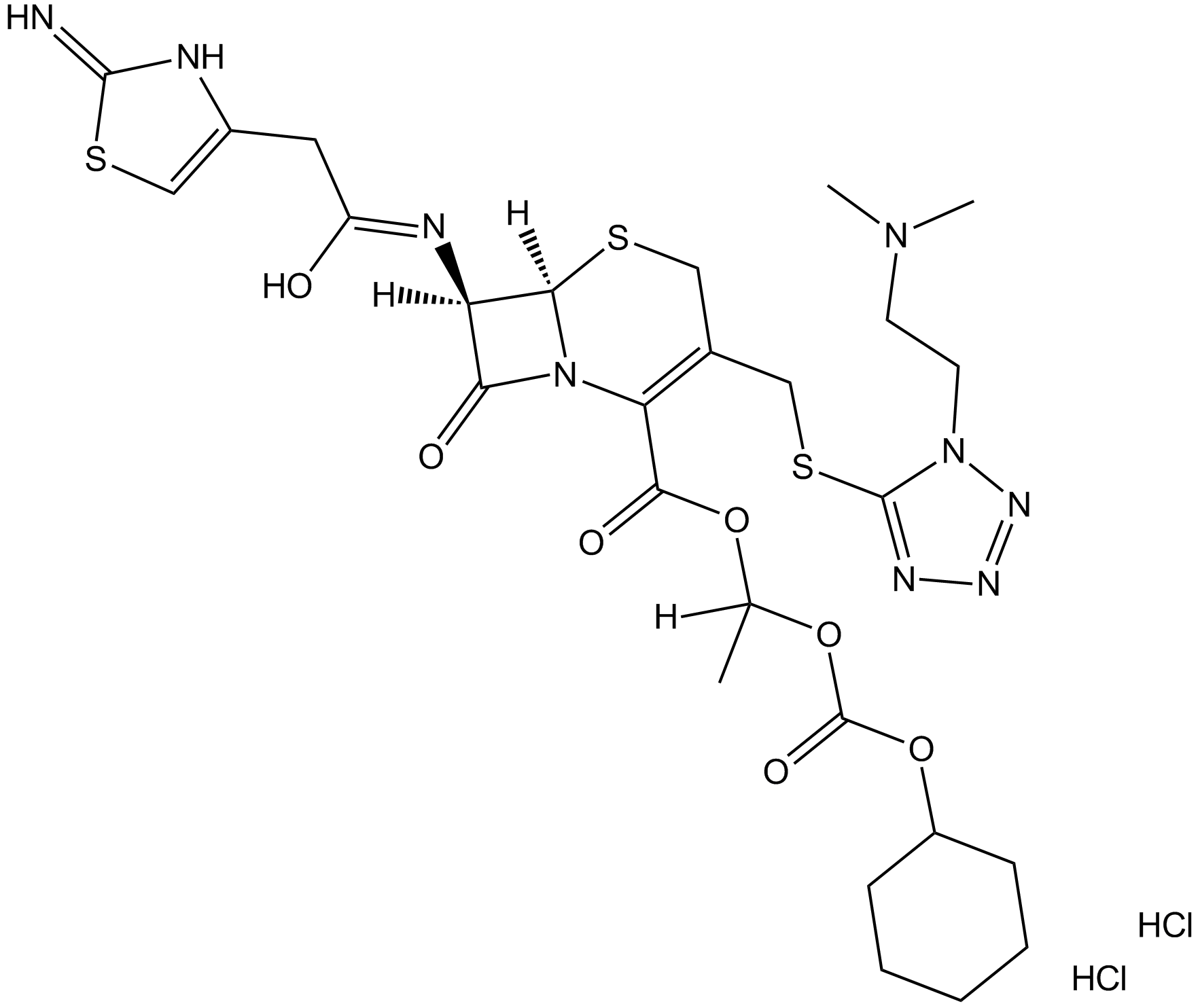Recombinant Proteins(重组蛋白)
Recombinant proteins are a new combination of genes that forms DNA. Recombinant DNA technology allows for the production of wild type and modified human and mammalian proteins at bulk quantities. Recombinant proteins are made from cloned DNA sequences which usually encode an enzyme or protein with known function
Recombinant proteins are made through genetic engineering, also called gene splicing or recombinant DNA technology. By putting human, animal or plant genes into the genetic material of bacteria, mammalian or yeast cells, these microorganisms can be used as factories or producers to make proteins for medical, academic and research uses.
A vector is simply a tool for manipulating DNA and can be viewed as a "transport vehicle" for the production of proteins from specific DNA sequences cloned into them. Purification and expression of a protein can sometimes be quite complicated & time-consuming, therefore an additional tag is used in addition to the specific DNA sequence which will facilitate the purification & expresion of the recombinant protein.
Recombinant Proteins are proteins that their DNA that has been created artificially. DNA from 2 or more sources which is incorporated into a single recombinant molecule. The DNA is first treated with restriction endonuclease enzyme which the ends of the cut have an overhanging piece of single-stranded DNA. These are called "sticky ends" because they are able to base pair with any DNA molecule containing the complementary sticky end. DNA ligase covalently links the two strands into 1 recombinant DNA molecule.
Recombinant DNA molecule must be replicated many times to provide material for analysis & sequencing. Producing many identical copies of the same recombinant DNA molecule is called cloning. Cloning is done in vitro, by a process called the polymerase chain reaction (PCR). Cloning in vivo can be done in unicellular microbessuch as E. coli, unicellular eukaryotes like yeast and in mammalian cells grown in tissue culture.
Recombinant DNA must be taken up by the cell in a form in which it can be replicated and expressed. This is achieved by incorporating the DNA in a vector. A number of viruses (both bacterial and of mammalian cells) can serve as vectors.
Recombinant DNA is also sometimes referred to as chimera. When combining two or more different strands of DNA.There are 3 different methods by which Recombinant DNA is made. 1. Transformation, 2. Phage-Transfection 3.Yeast, Plant & Mammalian Transformation. When using the method of transformation one needs to select a piece of DNA to be inserted into a vector, cut a piece of DNA with a restriction enzyme and ligate the DNA insert into the vector with DNA Ligase. The insert contains a selectable marker which allows for identification of recombinant molecules. An antibiotic marker is used in order to cause death for a host cell which does not contain the vector when exposed to a certain antibiotic.
Trasnformation is the insertion of the vector into the host cell. The host cells are prepared to take up the foreign DNA. Selectable markers are used for antibiotic resistance, color changes, or any other characteristic which can distinguish transformed hosts from untransformed hosts. Yeast, Plant & Mammalian Transformation is done by micro-injecting the DNA into the nucleus of the cell being transformed. Phage-Transfection process, is equivalent to transformation except for the fact that phage lambda or MI3 is used instead of bacteria.
These phages produce plaques which contain recombinant proteins which can be easily distinguished from the non-recombinant proteins by various selection methods.
Significant amounts of recombinant protein are produced by the host only when expression genes are added. The Protein’s expression depends on the genes which surround the DNA of interest, this collection of genes act as signals which provide instructions for the transcription and translation of the DNA of interest by the cell. These signals include the promoter, ribosome binding site, and terminator.
The recombinant DNA is inserted into expression vectors which contain the promoter, ribosome binding site, and terminator.
In prokaryotic systems, the promoter, ribosome binding site, and terminator have to be from the same host since the bacteria is unlikely to understand the signals of human promoters and terminators. The designated gene must not contain human introns since the bacteria does not recognize it and this results in premature termination, and the recombinant protein may not be processed correctly, be folded correctly, or may even be degraded.
The peptide sequence can be added as an extension at the N-terminal. Researchers can select the specific purification system which they would like to use. The unique vectors available contain several features needed for the production of bulk quantities of the target protein. The peptide sequence is usually placed in the vector so that it is designed to be a point of attack for a specific protease. Thus, after the recombinant protein is expressed and extracted from bacteria, specific peptide extension can be used to purify the protein and subsequently removed from the target protein to generate a nearly natural sequence on the final product.
6 or more consistent Histidine residues act as a metal binding site for recombinant protein purification and expression. The hexa-His sequence is called a His-Tag sequence which can be placed on the N-terminal of a target protein by using vectors from various commercial molecular biology companies. The His-Tag contains a cleavage site for a specific protease. His-Tag recombinant proteins are purified by Metal Chelate Affinity Chromatography such as nickel ion columns that are used as the heavy metal ion and the His-Tag protein is eluted from the metal-chelate column with Histidine or imidazole. Then the purified His-Tag protein is treated with the specific protease to cleave off the His-Tag or not if the tag doesn’t affect the active site of the protein.
Proteins have metal binding sites which can be used for the purification of recombinant and natural proteins. This type of purification is rather simple when using a gel bead which is covalently modified so that it displays a chelator group for binding a heavy metal ion like Ni2+ or Zn2+. The chelating group on the gel bead contains a small amount of the ligands needed to hold the metal ion. So when the protein’s metal binding site finds the heavy metal, it will bind by providing the ligands from its metal binding site to attach to the metal ion displayed on the chelator location of the gel bead. This purification method is quite identical to affinity chromatography when purifying metal-binding class of proteins.
Products for Recombinant Proteins
- Actin(7)
- ADAM(3)
- Adaptor-Related Protein Complex(3)
- ADP-Ribosylation Factor(21)
- Ag85(2)
- Albumin(7)
- Allergy(156)
- Alpha-2-HS-Glycoprotein(4)
- Anaplasma(3)
- Angiogenin(2)
- Ankyrin Repeat Domain(5)
- Annexin(20)
- Anterior Gradient Protein(3)
- ASF1 Anti-Silencing Function 1(2)
- ATP Synthase Mitochondrial(3)
- ATPase(9)
- Autophagy Related(4)
- B Cell Lymphoma(24)
- B9 Protein(2)
- Babesia Microti(3)
- Baculoviral IAP Repeat-Containing(3)
- Bartonella H.(3)
- Basic Transcription Factor(2)
- BATF(2)
- Bax(2)
- Beta 2 Microglobulin(3)
- BID(4)
- Biglycan(3)
- Bridging Integrator(2)
- Bromodomain Containing(3)
- Cadherin(8)
- Calbindin(4)
- Calcium Binding Protein(30)
- Calmodulin(4)
- Calpain(2)
- Calponin(2)
- Calreticulin(2)
- Calumenin(2)
- Candida Albicans(4)
- Canopy FGF Signaling Regulator(3)
- Capping Protein(2)
- Caspase Recruitment Domain Family(2)
- CCR4-NOT Transcription Complex(2)
- CEA(9)
- CEBP(2)
- Cell Division Cycle(5)
- Cellular Retinoic Acid Binding Protein(2)
- Centrin(3)
- Centromere Protein(7)
- Charged Multivesicular Body Protein(3)
- Chloride Intracellular Channel(2)
- Chromatin Modifying Protein(4)
- Chromobox(3)
- Chromogranin(6)
- Chromosome Open Reading Frame(17)
- Clathrin(2)
- Coagulation Factors(7)
- Cofilin(2)
- Coiled-Coil Domain(9)
- Collagen(16)
- COMM Domain Containing(4)
- Complement Component(55)
- COP9 Signalosome(3)
- C-Reactive Protein(6)
- Crystallin(13)
- C-type Lectin Domain(11)
- CUE Domain Containing(2)
- Cystatin(25)
- Cysteine-Rich(2)
- Cysteine-Rich Secretory Protein(3)
- Cytochrome(9)
- Cytohesin(4)
- Cytokeratin(14)
- DCUN1D(3)
- DEAD Box Protein(2)
- Decorin(3)
- Density Lipoprotein(8)
- Developmental Pluripotency Associated(3)
- Dickkopf-Related Protein(7)
- DiGeorge Syndrome Critical Region(2)
- DNA-Damage Protein(7)
- Dynactin(4)
- Dynein Light Chain(7)
- Dysbindin(2)
- Ectodysplasin(4)
- Elongator Acetyltransferase Complex(2)
- Endoplasmic Reticulum Protein(3)
- Endothelial Cell-Specific Molecule 1(4)
- EPH Receptor(6)
- Ephrin(13)
- ERCC(1)
- Eukaryotic Translation Initiation Factor(21)
- Exosome Component(6)
- FABP(28)
- Family with Sequence Similarity(8)
- F-Box Protein(1)
- Ferritin(3)
- Fibrinogen(3)
- Fibronectin Type III Domain Containing(2)
- Four And A Half LIM(2)
- Fragile Histidine Triad(2)
- G Antigen(3)
- GABA(A) Receptor-Associated Protein(3)
- Gastrokine(3)
- GDP Dissociation Inhibitor(2)
- General Transcription Factor(6)
- GIPC PDZ Domain(2)
- Gliadin(3)
- Glycophorin(3)
- Glycoprotein Nmb(3)
- Glypican(3)
- Gremlin(2)
- GTPase IMAP Family(2)
- GTP-Binding Protein(2)
- Guanine Nucleotide Binding Protein(11)
- Hairy and Enhancer of Split(2)
- Haptoglobin(5)
- Heat Shock Protein(66)
- Hematological And Neurological Expressed(2)
- Hemoglobin(8)
- Hemopexin(3)
- High-Mobility Group(8)
- HINT(2)
- HLA(8)
- HNRNP(3)
- Hypoxia-Inducible Factor(3)
- IMPAD1(4)
- Ig Heavy Chain Constant Region(7)
- Inhibitor of DNA Binding(2)
- Inhibitor of Growth Family(2)
- Integrin(52)
- Intercellular Adhesion Molecule(9)
- Junctional Adhesion Molecule(3)
- Karyopherin(2)
- KCTD(4)
- Killer Cell(8)
- Killer Cell Lectin-like Receptor(9)
- Kirsten Rat Sarcoma Viral Oncogene(2)
- Kruppel-Like Factor(6)
- Lactoferrin(3)
- LBP(3)
- Leukocyte Cell Derived Chemotaxin(3)
- Leukocyte-Associated Ig-Like Receptor(3)
- LIN Protein(5)
- Listeriolysin(2)
- LRG1(3)
- Lymphocyte Antigen(3)
- Lysosomal-Associated Membrane Protein(3)
- MAD2(2)
- MAF(3)
- Mago-Nashi Homolog(2)
- Maltose Binding Protein(3)
- Mediator Complex(5)
- Melanoma Antigen Family A(8)
- Member RAS Oncogene Family(40)
- Mesoderm Development Candidate(2)
- Methylmalonic Aciduria(2)
- MHC class I chain-related gene(3)
- Microfibrillar Associated Protein(4)
- Microtubule-Associated Protein(8)
- Mitochondrial Ribosomal Protein(8)
- Mitochondrial Transcription Factor(2)
- Mortality Factor(2)
- Myelin Basic Protein(1)
- Myelin Oligodendrocyte Glycoprotein(4)
- Myoglobin(4)
- Myosin Light Chain(12)
- Myxovirus(3)
- NANOG(4)
- NCK Adaptor Protein(2)
- NECTIN(3)
- Nescient Helix Loop Helix(2)
- Neuronal Calcium Sensor(2)
- Neutrophil Cytosolic Factor(2)
- NFKB Inhibitor(5)
- NHP2(2)
- N-Myc Downstream Regulated(3)
- Non-Metastatic Cells(7)
- NPM(2)
- NTF2-like Export Factor(1)
- Nucleobindin(2)
- Nucleopurin(2)
- Nucleosome Assembly Protein(2)
- Orosomucoid(5)
- Other(755)
- Outer Membrane Protein(1)
- p53(20)
- Paired Box(2)
- Parkinson Disease Protein(3)
- Parvalbumin(2)
- PCNA(2)
- PDZ Domain Containing(2)
- Pentraxin(3)
- Peroxisomal Biogenesis Factor(2)
- PHD Finger Protein(2)
- Phosducin-Like(2)
- Phosphatase and Tensin(1)
- Phospholipid Scramblase(2)
- PIH1 Domain Containing(2)
- Pim Oncogene(2)
- PITPN(2)
- Polymerase (RNA) (DNA directed) Polypeptide(7)
- Prefoldin(5)
- Pregnancy Specific Beta-1-Glycoprotein(4)
- Prion Protein(2)
- Processing Of Precursor(2)
- Profilin(4)
- Programmed Cell Death(8)
- Prohibitin(2)
- Proprotein Convertase Subtilisin/Kexin(1)
- Protein C-Ets(2)
- Protein Phosphatase(2)
- Prothymosin(2)
- RAD51(9)
- RAN Binding Protein(2)
- Ras-Related C3 Botulinum Toxin Substrate(5)
- RASSF(2)
- Receptor Activity-Modifying Protein(2)
- Regenerating Islet-Derived(4)
- Regulator of Calcineurin(3)
- Regulator of G-Protein Signaling(9)
- Related RAS Viral (r-ras) Oncogene(2)
- Relaxin(3)
- Renin(5)
- Reticulocalbin(2)
- Retinoblastoma(3)
- Retinoic Acid Early Transcript(6)
- Retinoic Acid Receptor Responder(4)
- Rho Family GTPase(2)
- Rho GDP Dissociation Inhibitor(2)
- Ribosomal Protein(30)
- Ring Finger Protein(5)
- RNA Binding Motif Protein(3)
- R-Spondin(4)
- RWD Domain Containing(2)
- Sclerostin(3)
- SDHAF(2)
- Secretagogin(2)
- Secreted Frizzled-Related Protein(6)
- Secretoglobin(4)
- Secretogranin(2)
- Selectin(7)
- Selenoprotein(2)
- Septin(3)
- Serglycin(2)
- Serine Peptidase Inhibitor(3)
- Serpin(27)
- SERTA Domain Containing(2)
- SH2 Domain(2)
- SH3 Domain(6)
- SIGLEC(5)
- Signal Recognition Particle(2)
- Signal Sequence Receptor(3)
- Signal-Regulatory Protein(6)
- Single-Stranded DNA Binding Protein(2)
- Sirtuin(35)
- SLAM Family(5)
- SMAD(3)
- SNRP(15)
- Solute Carrier Family(3)
- Sorting Nexin(2)
- SPSB(1)
- sRAGE(3)
- SRY (Sex Determining Region Y)-Box(3)
- Stathmin(4)
- STIP(3)
- Streptavidin Proteins(5)
- Superoxide Dismutase(36)
- Surfeit(2)
- Synaptobrevin(11)
- Synaptosomal Associated Protein(5)
- Synaptotagmin(5)
- Syndecan(5)
- Syntaxin(10)
- Synuclein(7)
- Tachykinin(2)
- TAR DNA(4)
- TBC1 Domain Family(2)
- TCL(2)
- THAP Domain(4)
- Thioredoxin(15)
- TIGAR(3)
- Tissue Factor Pathway Inhibitor(3)
- TNF receptor-Associated Factor(2)
- Toll Like Receptor(1)
- Trafficking Protein Particle Complex(4)
- Transcription Elongation Factor(9)
- Transferrin(3)
- Transforming Growth Factor Beta Induced(5)
- Transgelin(2)
- Translocase Of Outer Mitochondrial Membrane(2)
- Triggering Receptor Expressed on Myeloid Cells(2)
- Tripartite Motif(4)
- Tropomyosin(3)
- Troponin(16)
- TROVE Domain Family(3)
- Trypsin(4)
- TTC(3)
- Tubulin Folding Cofactor(5)
- Tubulin Gamma(2)
- U6 Small Nuclear RNA(5)
- Ubiquinol-Cytochrome C Reductase(3)
- Ubiquitin(16)
- UCHL1(4)
- UL16 binding protein(7)
- Uroplakin(2)
- Vacuolar Protein Sorting(7)
- Vascular cell adhesion molecule(5)
- V-crk Sarcoma Virus CT10(2)
- Vimentin(3)
- Visinin-Like Protein(2)
- V-ral Simian Leukemia Viral Oncogene(3)
- WAP Four-Disulfide Core Domain(2)
- Y. Enterocolitica(8)
- Zinc Finger(16)
- Default Categoryobox(9)
- Default Categoryr Homolog(3)
- MOB1(2)
- POU Class(4)
- Protein-A(24)
- SIX Default Categoryobox(2)
- Synovial Sarcoma(2)
- Mps One Binder Kinase Activator(2)
- X Breakpoint(2)
- p62(3)
- Cat.No. 产品名称 Information
-
GC43189
CAY10681
A dual modulator of p53-MDM2 interaction and NF-κB signaling

-
GC43190
CAY10682
A dual inhibitor of p53-Mdm2 interaction and NF-κB signaling

-
GP22976
CBFB HUman
Core Binding Factor Beta Human Recombinant

-
GP22977
CBX1 Human
Chromobox Homolog 1 Human Recombinant

-
GP22978
CBX3 Human
Chromobox Homolog 3 Human Recombinant

-
GP22979
CBX5 Human
Chromobox Homolog 5 Human Recombinant

-
GP22986
CCDC101 Human
Coiled-Coil Domain Containing 101 Human Recombinant

-
GP22987
CCDC104 Human
Coiled-Coil Domain Containing 104 Human Recombinant

-
GP22981
CCDC23 Human
Coiled-Coil Domain Containing 23 Human Recombinant

-
GP22982
CCDC25 Human
Coiled-Coil Domain Containing 25 Human Recombinant

-
GP22983
CCDC43 Human
Coiled-Coil Domain Containing 43 Human Recombinant

-
GP22984
CCDC69 Human
Coiled-Coil Domain Containing 69 Human Recombinant

-
GP22985
CCDC90B Human
Coiled-Coil Domain Containing 90B Human Recombinant

-
GP22980
CCM2 Human
Cerebral Cavernous Malformation 2 Human Recombinant

-
GP23099
CDC123 Human
Cell Division Cycle 123 Human Recombinant

-
GP21472
CDC25A Human
Cell Division Cycle 25A Human Recombinant

-
GP21473
CDC34 Human
Cell Division Cycle 34 Human Recombinant

-
GP23097
CDC37 Human
Cell Division Cycle 37 Human Recombinant

-
GP23098
CDC42 Human
Cell Division Cycle 42 Human Recombinant

-
GP23100
CDCP1 Human
CUB Domain Containing Protein 1 Human Recombinant

-
GP23102
CDH1 Human, HEK
E-Cadherin Human Recombinant, HEK

-
GP23103
CDH1 Human, Sf9
E-Cadherin Human Recombinant, Sf9

-
GP23107
CDH11 Human
Cadherin 11 Human Recombinant

-
GP23104
CDH2 Human
Cadherin 2 Human Recombinant

-
GP23105
CDH5 Human
Cadherin 5 Human Recombinant

-
GP23106
CDH5 Mouse
Cadherin 5 Mouse Recombinant

-
GP26246
CDHR5 Mouse
CDHR5 Mouse Recombinant produced in Sf9 Baculovirus cells is a single, glycosylated polypeptide chain containing 621 amino acids (29-641 a

-
GP22991
CDK5RAP3 Human
CDK5 Regulatory Subunit Associated Protein 3 Human Recombinant

-
GP22990
CDKN2AIPNL Human
CDKN2A Interacting Protein N-Terminal Like Human Recombinant

-
GP23108
CEA Human
Carcinoembryonic Antigen Human Recombinant

-
GP23109
CEA Human, His
Carcinoembryonic Antigen Human Recombinant, His Tag

-
GP23110
CEACAM1 Human
Carcinoembryonic Antigen-Related Cell Adhesion Molecule 1 Human Recombinant

-
GP23115
CEACAM21 Human
Carcinoembryonic Antigen-Related Cell Adhesion Molecule 21 Human Recombinant

-
GP23111
CEACAM3 Human
Carcinoembryonic Antigen-Related Cell Adhesion Molecule 3 Human Recombinant

-
GP23112
CEACAM3 Human, Sf9
Carcinoembryonic Antigen-Related Cell Adhesion Molecule 3 Human Recombinant, Sf9

-
GP23113
CEACAM6 Human
Carcinoembryonic Antigen-Related Cell Adhesion Molecule 6 Recombinant Human

-
GP23114
CEACAM7 Human
Carcinoembryonic Antigen-Related Cell Adhesion Molecule 7 Human Recombinant

-
GP26247
CEACAM8 Human
CEACAM8 Human produced in Sf9 Baculovirus cells is a single, glycosylated polypeptide chain containing 292 amino acids (35-320 a

-
GP23116
CEBP Alpha Human
CCAAT/enhancer binding protein CEBP Alpha Human Recombinant

-
GP23117
CEBP Gamma Human
CCAAT/enhancer binding protein C/EBP Gamma Recombinant Human

-
GP23118
CECR1 Human
Cat Eye Syndrome Chromosome Region Candidate 1 Human Recombinant

-
GC20109
Cefotiam hexetil hydrochloride
盐酸头孢替安酯; CTM-HE hydrochloride; SCE-2174 hydrochloride
Cefotiam hexetil hydrochloride 是可口服的第三代头孢菌素,是 cefotiam 的前药,但无抗菌作用。Cefotiam 是一种抗生素。

-
GP23119
CEND1 Human
Cell Cycle Exit And Neuronal Differentiation 1 Human Recombinant

-
GP23120
CENPA Human
着丝粒蛋白 A 人类重组

-
GP23121
CENPB Human
Centromere Protein B Human Recombinant

-
GP23122
CENPH Human
Centromere Protein-H Human Recombinant

-
GP23123
CENPM Human
Centromere Protein-M Human Recombinant

-
GP23124
CENPP Human
Centromere Protein-P Human Recombinant

-
GP23125
CENPQ Human
Centromere Protein-Q Human Recombinant

-
GP23126
CENPU Human
Centromere Protein-U Human Recombinant





